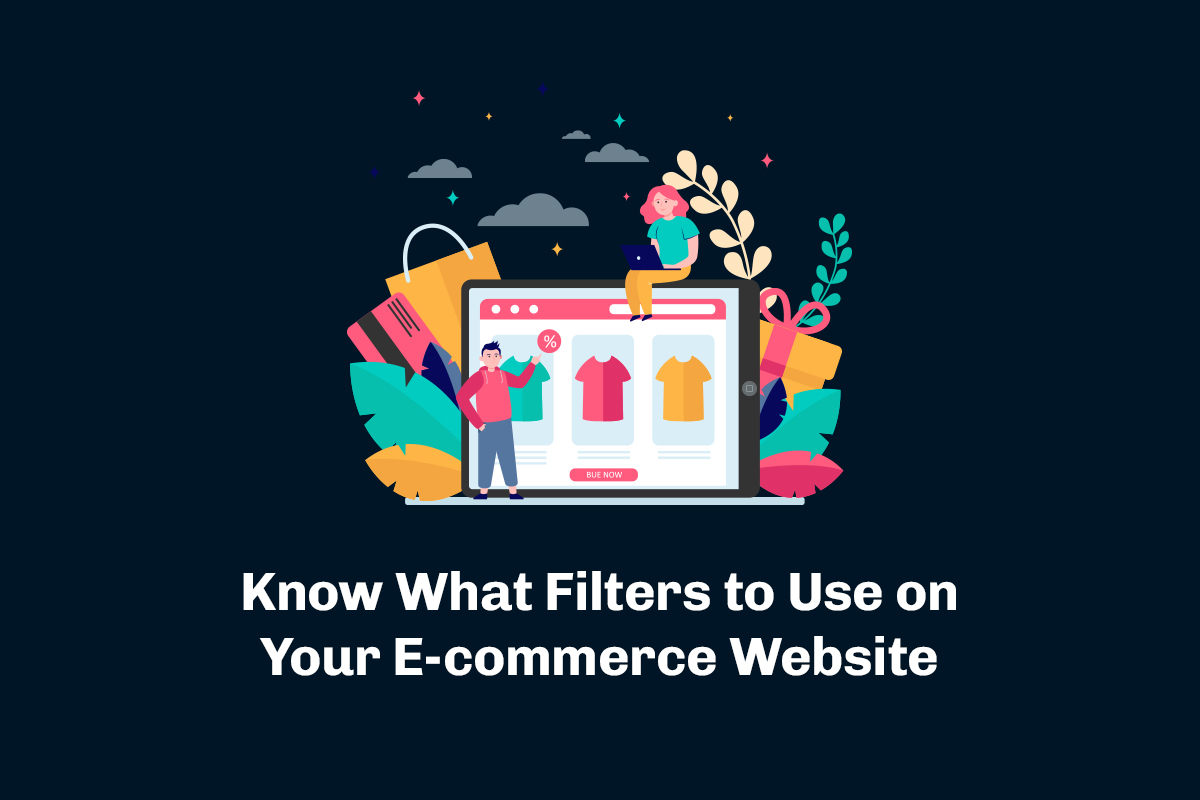
What Filters to Use on Your E-commerce Website?
With the e-commerce website gaining popularity, keeping up with this digital upgrade is no longer a choice, it has become a necessity. The masses are looking for a seamless online shopping experience and you are here to serve them the same. E-commerce is a huge platform. It offers a wide array of products keeping in mind that time is an essential factor here. Every user looks for an efficient and user-friendly search functionality, which is what makes the employment of the correct filters so important on an e-commerce platform. You have the appropriate filters giving the user an effortless shopping experience and you are bound to taste success. Thus, as an online shopping experience provider it is your responsibility to ensure that the search mechanism is flawless.
Why do you need User-Friendly Search Functionality:
- It allows users to locate things easily – Customers who can easily find what they are looking for are more likely to stay on your site, explore products, and make purchases. You surely don’t want your potential customers to leave your website out of frustration. The more satisfied the customer the greater the chances of brand loyalty.
- It gives a boost to conversion rates: When customers can swiftly locate the products they want, it smoothly guides the customer from browsing to checking out. In this way, you can very smartly bring a change in the decision-making process of the customer. For those customers who may have just come in to take a look at things will end up purchasing them in a lot of cases. This in turn reduces the likelihood of abandoned carts.
- Encourages Repeat Visits: By giving the previous two things, you are, without the consciousness of the customer attracting them to an experience that they would want to take repeatedly. A positive search experience creates a favorable impression, prompting customers to return for future purchases. A user who finds your site easy to navigate is more likely to become a loyal customer. This loyalty, in turn, can translate into increased customer lifetime value.
How to Implement and Optimize Product Filters:
- Intuitive Filter Categories: Begin by categorizing your products logically. Figure out what matters most to your customers and create intuitive filter categories. For example, for a clothing store, some common filters used are size, color, style, and price range. These filters must align with the characteristics that customers generally look for when making purchasing decisions.
- Filter Responsiveness: Ensure that there sure not be any lag in the responsiveness of the filters. In other words, when a customer selects a certain filter, it ought to be activated instantly. A customer is bound to be satisfied with such prompt response and ease of use.
- Search Autocomplete and Suggestions: When a customer types in for a search offer them predictive suggestions. This autocomplete suggestion option gives an added convenience to the user. As users type their query, provide instant suggestions based on product names, categories, or popular search terms. This not only speeds up the search process but also helps users discover products they might not have considered.
- Advanced Search Options: Some customers have very specific needs, for them, having an advanced search option is very beneficial. Some of the advanced filters that can be included in an e-commerce website are:
- Users can filter products based on ratings, allowing them to see products with a minimum or maximum rating.
- Some users may prefer products with a substantial amount of reviews. Offer filters to show products with positive reviews, negative reviews, or a mix of both, catering to varied preferences.
- Allow users to set a specific price range for their search, ensuring they find products within their budget.
- based on a user’s purchase history, browsing behavior, and preferences provide personalized product recommendations.
- Analytics and User Feedback: To be 100% sure that you have implemented the appropriate filters, you could do some homework. Analyze the search patterns regularly. You will be able to notice a certain behavioral pattern; do this using the analytics tool. Understand which filters are frequently used, and identify any pain points or common issues. Additionally, gather user feedback to gain insights into areas for improvement and to discover features users may find valuable.
- Mobile Optimization: Considering the rampant use of mobile phones for almost every task, the masses want to access their shopping experiences also while they are on the go. It is therefore very crucial that your e-commerce is optimized for usage on mobile phones as well. This is will certainly help in an increase in the conversion and retention of customers largely.
All in all, an e-commerce /platform in this digital age is an extremely lucrative addition to one’s business. Irrespective of the size of your business, thus, you should consider investing in an e-commerce website. However, since as a need increases, the providers also increase, be very careful in selecting the website developer from who you get this made.
Hyrrokkin is a trusted brand for all kinds of IT products for the past decade and more. Our e-commerce offering is not just highly optimized and high-performance oriented but also extremely secure. At Hyrrokkin we ensure that all your customer data and payment information is kept safe and we make sure to keep the platform protected from all malware and vulnerabilities.
Therefore, it is crucial to remember that the implementation and optimization of product filters and search functionality are highly essential and integral for an e-commerce platform. By prioritizing user needs online retailers can ensure that their customers find what they seek quickly and effortlessly.







